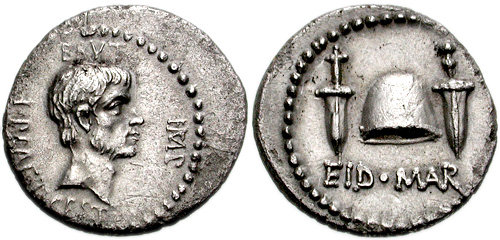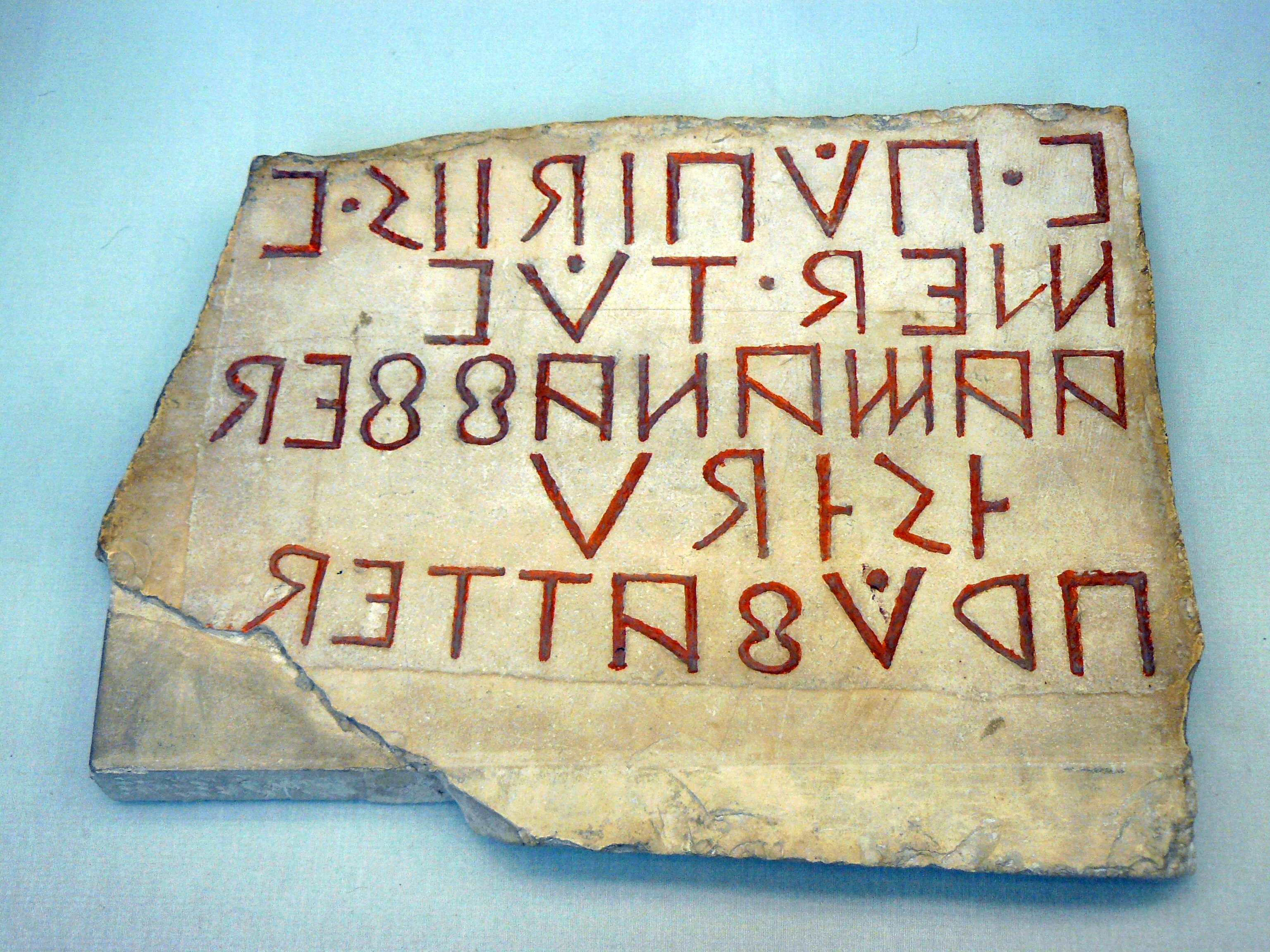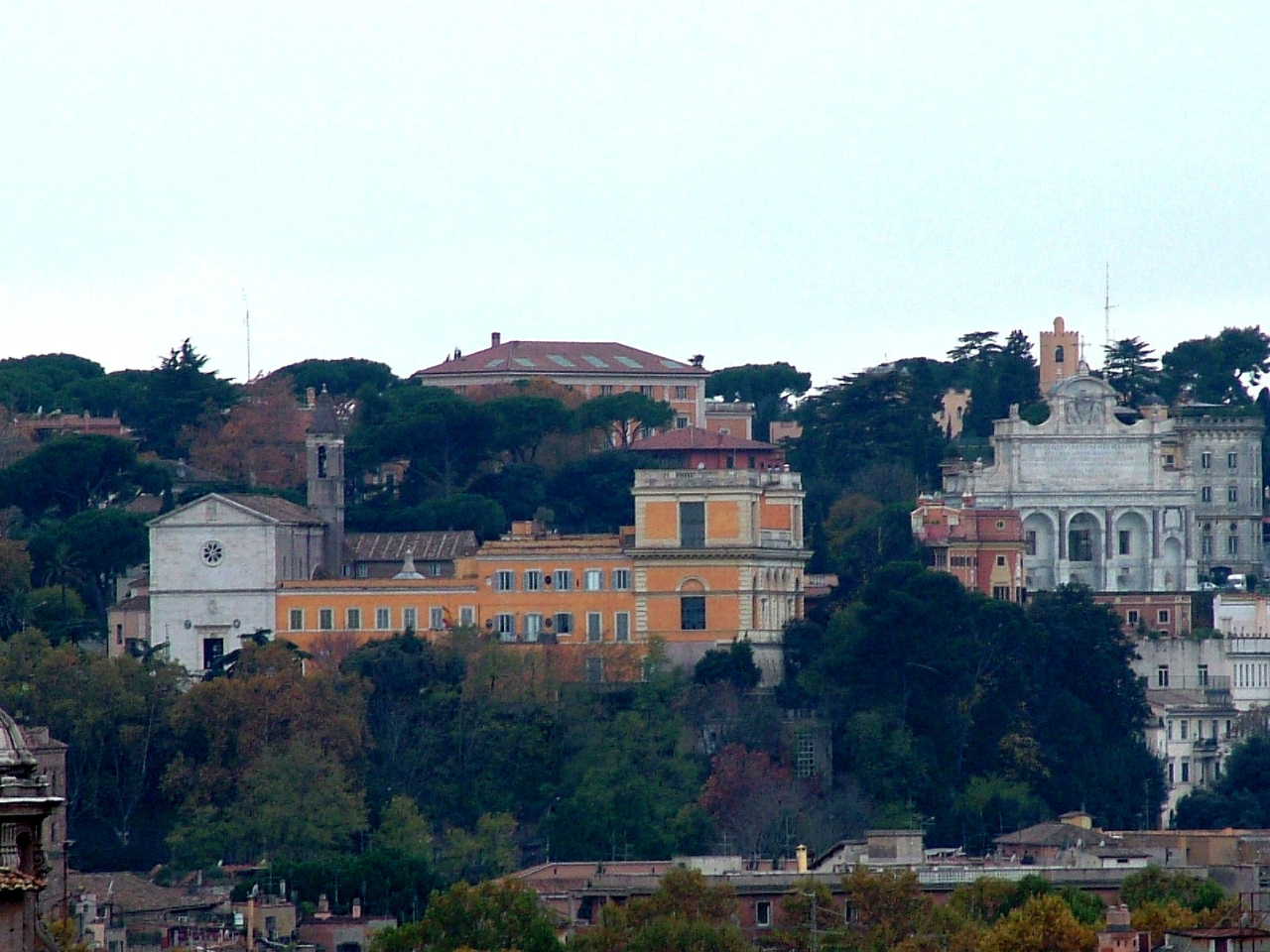|
Statia Gens
The gens Statia was a minor plebeian family at ancient Rome. Members of this gens are first mentioned in the early decades of the Republic, but the name does not appear again in history until the time of Cicero. The Statii remained relatively undistinguished until the reign of Trajan, when Lucius Statius Aquila was raised to the consulship.''Dictionary of Greek and Roman Biography and Mythology'', vol. III, p. 901 (" Statia Gens"). Origin The nomen ''Statius'' is of Oscan origin, and most of the Statii appearing in history before the late Republic were from Samnium or Lucania. ''Statius'' is a patronymic surname, derived from the Oscan praenomen ''Statius'', without any change in morphology. Praenomina The Statii used only the most common of praenomina: '' Lucius'', '' Lucius'', ''Marcus'', '' Publius'', ''Quintus'', ''Titus'', and ''Sextus'', of which the first five were the most abundant at all periods of Roman history. Of these, the Statii used primarily ''Lucius'', ''Gai ... [...More Info...] [...Related Items...] OR: [Wikipedia] [Google] [Baidu] |
Plebeian
In ancient Rome, the plebeians (also called plebs) were the general body of free Roman citizens who were not patricians, as determined by the census, or in other words "commoners". Both classes were hereditary. Etymology The precise origins of the group and the term are unclear, but may be related to the Greek, ''plēthos'', meaning masses. In Latin, the word is a singular collective noun, and its genitive is . Plebeians were not a monolithic social class. Those who resided in the city and were part of the four urban tribes are sometimes called the , while those who lived in the country and were part of the 31 smaller rural tribes are sometimes differentiated by using the label . ( List of Roman tribes) In ancient Rome In the annalistic tradition of Livy and Dionysius, the distinction between patricians and plebeians was as old as Rome itself, instituted by Romulus' appointment of the first hundred senators, whose descendants became the patriciate. Modern hypotheses d ... [...More Info...] [...Related Items...] OR: [Wikipedia] [Google] [Baidu] |
Quintus (praenomen)
Quintus () is a Latin praenomen, or personal name, which was common throughout all periods of Roman history. It was used by both patrician and plebeian families, and gave rise to the patronymic gentes Quinctia and Quinctilia. The feminine form is ''Quinta''. The name was regularly abbreviated Q.''Dictionary of Greek & Roman Biography & Mythology'' Throughout Roman history, Quintus was one of the most common praenomina, generally occupying fourth or fifth place, behind '' Lucius'', ''Gaius'', and ''Marcus'', and occurring about as frequently as '' Publius''. Although many families did not use the name at all, it was particularly favored by others. The name continued to be used after the collapse of Roman civil institutions in the fifth and sixth centuries, and has survived to the present day.''Realencyclopädie der Classischen Altertumswissenschaft'' Origin and meaning Quintus is the Latin word for "fifth", and it falls into a class of similar praenomina including the masculine ... [...More Info...] [...Related Items...] OR: [Wikipedia] [Google] [Baidu] |
Second Triumvirate
The Second Triumvirate was an extraordinary commission and magistracy created for Mark Antony, Marcus Aemilius Lepidus, and Octavian to give them practically absolute power. It was formally constituted by law on 27 November 43 BC with a term of five years; it was renewed in 37 BC for another five years before expiring in 32 BC. Constituted by the '' lex Titia'', the triumvirs were given broad powers to make or repeal legislation, issue judicial punishments without due process or right of appeal, and appoint all other magistrates. The triumvirs also split the Roman world into three sets of provinces. The triumvirate, formed in the aftermath of a conflict between Antony and the senate, emerged as a force to reassert Caesarian control over the western provinces and wage war on the ''liberatores'' led by the men who assassinated Julius Caesar. After proscriptions, purging the senatorial and equestrian orders, and a brutal civil war, the ''liberatores'' were def ... [...More Info...] [...Related Items...] OR: [Wikipedia] [Google] [Baidu] |
Roman Senate
The Roman Senate ( la, Senātus Rōmānus) was a governing and advisory assembly in ancient Rome. It was one of the most enduring institutions in Roman history, being established in the first days of the city of Rome (traditionally founded in 753 BC). It survived the overthrow of the Roman monarchy in 509 BC; the fall of the Roman Republic in the 1st century BC; the division of the Roman Empire in AD 395; and the fall of the Western Roman Empire in 476; Justinian's attempted reconquest of the west in the 6th century, and lasted well into the Eastern Roman Empire's history. During the days of the Roman Kingdom, most of the time the Senate was little more than an advisory council to the king, but it also elected new Roman kings. The last king of Rome, Lucius Tarquinius Superbus, was overthrown following a coup d'état led by Lucius Junius Brutus, who founded the Roman Republic. During the early Republic, the Senate was politically weak, while the various executive magistr ... [...More Info...] [...Related Items...] OR: [Wikipedia] [Google] [Baidu] |
Roman Citizenship
Citizenship in ancient Rome (Latin: ''civitas'') was a privileged political and legal status afforded to free individuals with respect to laws, property, and governance. Citizenship in Ancient Rome was complex and based upon many different laws, traditions, and cultural practices. There existed several different types of citizenship, determined by one's gender, class, and political affiliations, and the exact duties or expectations of a citizen varied throughout the history of the Roman Empire. History The oldest document currently available that details the rights of citizenship is the Twelve Tables, ratified c. 449 BC. Much of the text of the Tables only exists in fragments, but during the time of Ancient Rome the Tables would be displayed in full in the Roman Forum for all to see. The Tables detail the rights of citizens in dealing with court proceedings, property, inheritance, death, and (in the case of women) public behavior. Under the Roman Republic, the government conduct ... [...More Info...] [...Related Items...] OR: [Wikipedia] [Google] [Baidu] |
Social War (91–87 BC)
The Social War (from Latin , properly 'war of the allies'), also called the Italian War or the Marsic War, was fought from 91 to 87 BC between the Roman Republic and several of its autonomous allies () in Italy. The Italian allies wanted Roman citizenship, not only for the status and influence that came with it, but also for the right to vote in Roman elections and laws. They believed that they should be treated equally to the Romans, given that they had formed cultural and linguistic connections with the Roman civilization, and had been their loyal allies for over two centuries. The Romans strongly opposed their demands, and refused to grant them citizenship, thus leaving the ''socii'' with fewer rights and privileges. The situation escalated in 91 BC, leading to the outbreak of a devastating war, in which many of the Italian allies, headed by the Samnites and the Marsi, staged a four-year revolt against Roman rule. Most of the Etruscan, Umbrian and Latin allies did not j ... [...More Info...] [...Related Items...] OR: [Wikipedia] [Google] [Baidu] |
Samnites
The Samnites () were an ancient Italic people who lived in Samnium, which is located in modern inland Abruzzo, Molise, and Campania in south-central Italy. An Oscan-speaking people, who may have originated as an offshoot of the Sabines, they formed a confederation consisting of four tribes: the Hirpini, Caudini, Caraceni, and Pentri. Although allied together against the Gauls in 354 BC, they later became enemies of the Romans and fought them in a series of three wars. Despite an overwhelming victory at the Battle of the Caudine Forks (321 BC), the Samnites were subjugated in 290 BC. Although severely weakened, the Samnites would still side against the Romans, first in the Pyrrhic War and then with Hannibal in the Second Punic War. They also fought in the Social War and later in Sulla's civil war as allies of the Roman consuls Papirius Carbo and Gaius Marius against Sulla, who defeated them and their leader Pontius Telesinus at the Battle of the Colline Gate (82 BC ... [...More Info...] [...Related Items...] OR: [Wikipedia] [Google] [Baidu] |
Aulus Verginius Tricostus Rutilus
Aulus Verginius Tricostus Rutilus was a Roman consul in 476 BC.Titus Livius, ''Ab Urbe Condita'', ii. 51. Following their defeat of the Roman army at the Battle of the Cremera in 477 BC, the Veientes marched on Rome and occupied the Janiculum. There they remained at the beginning of Verginius' consulship. Both consuls, Verginius and his colleague Spurius Servilius, remained in Rome to deal with the threat.Titus Livius, ''Ab Urbe Condita'', ii. 50-51. The Veientes marched from the Janiculum and crossed the Tiber The Tiber ( ; it, Tevere ; la, Tiberis) is the third-longest river in Italy and the longest in Central Italy, rising in the Apennine Mountains in Emilia-Romagna and flowing through Tuscany, Umbria, and Lazio, where it is joined by the Riv ..., and assaulted the camp of Servilius. His force successfully repulsed the Veientes, who retreated to the Janiculum. The following morning Servilius' army took position at the foot of the Janiculum, and marched up the ... [...More Info...] [...Related Items...] OR: [Wikipedia] [Google] [Baidu] |
Janiculum
The Janiculum (; it, Gianicolo ), occasionally the Janiculan Hill, is a hill in western Rome, Italy. Although it is the second-tallest hill (the tallest being Monte Mario) in the contemporary city of Rome, the Janiculum does not figure among the proverbial Seven Hills of Rome, being west of the Tiber and outside the boundaries of the ancient city. Sights The Janiculum is one of the best locations in Rome for a scenic view of central Rome with its domes and bell towers. Other sights on the Janiculum include the church of San Pietro in Montorio, on what was formerly thought to be the site of St Peter's crucifixion; a small shrine known as the Tempietto, designed by Donato Bramante, marks the supposed site of Peter's death. The Janiculum also houses a Baroque fountain built by Pope Paul V in the late 17th century, the Fontana dell'Acqua Paola, and several foreign research institutions, including the American Academy in Rome and the Spanish Academy in Rome. The Hill is als ... [...More Info...] [...Related Items...] OR: [Wikipedia] [Google] [Baidu] |
Veii
Veii (also Veius; it, Veio) was an important ancient Etruscan city situated on the southern limits of Etruria and north-northwest of Rome, Italy. It now lies in Isola Farnese, in the comune of Rome. Many other sites associated with and in the city-state of Veii are in Formello, immediately to the north. Formello is named after the drainage channels that were first created by the Veians. Veii was the richest city of the Etruscan League. It was alternately at war and in alliance with the Roman Kingdom and later Republic for over 300 years. It eventually fell in the Battle of Veii to Roman general Camillus's army in 396 BC. Veii continued to be occupied after its capture by the Romans. The site is now a protected area, part of the Parco di Veio established by the regional authority of Lazio in 1997. Site City of Veii The city of Veii lies mainly on a tuff plateau in area. The Valchetta flows a few miles eastward to join the Tiber River on the south side of ... [...More Info...] [...Related Items...] OR: [Wikipedia] [Google] [Baidu] |
Spurius Servilius Structus (consul 476 BC)
Spurius Servilius Structus was a Roman consul in 476 BC.Titus Livius, ''Ab Urbe Condita'', ii. 51. Following their defeat of the Roman army at the Battle of the Cremera in 477 BC, the Veientes marched on Rome and had occupied the Janiculum. There they remained at the beginning of Servilius' consulship. Both consuls, Servilius and his colleague Aulus Verginius, remained in Rome to deal with the threat. The Veientes marched from the Janiculum and crossed the Tiber, and assaulted the camp of Servilius. His force successfully repulsed the Veientes, who retreated to the Janiculum. The following morning Servilius' army took position at the foot of the Janiculum, and marched up the slope to attack the enemy. The battle went badly for the Romans, until a force led by the other consul Verginius attacked the Veientes from the rear, whereupon the Veientes were cut off and soundly defeated. In 475 BC, immediately after Servilius' term as consul had ended, the tribunes Lucius Caedicius ... [...More Info...] [...Related Items...] OR: [Wikipedia] [Google] [Baidu] |






